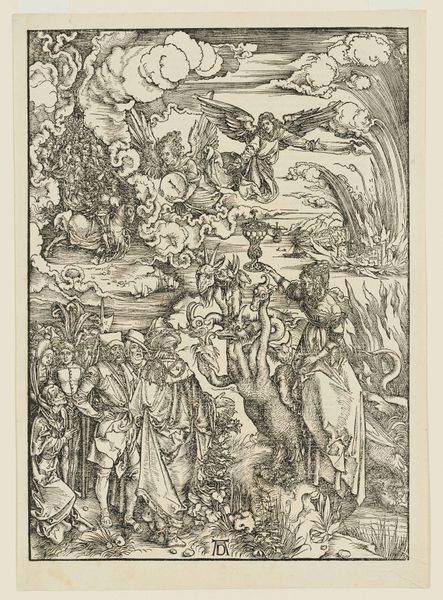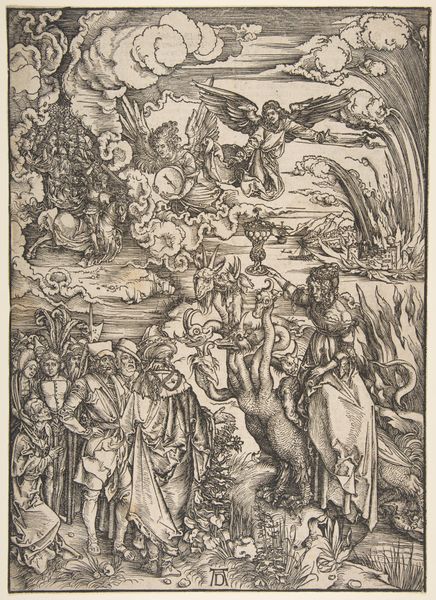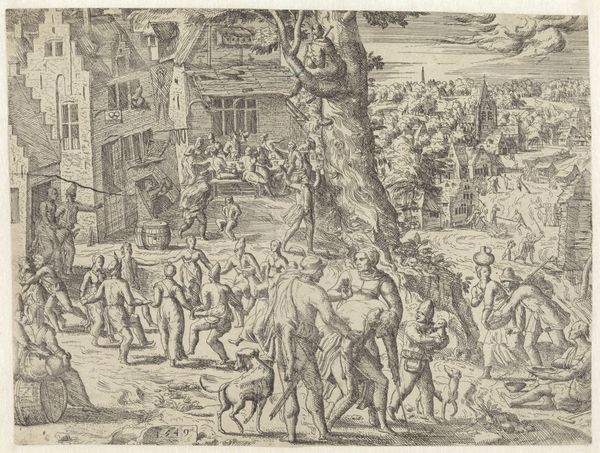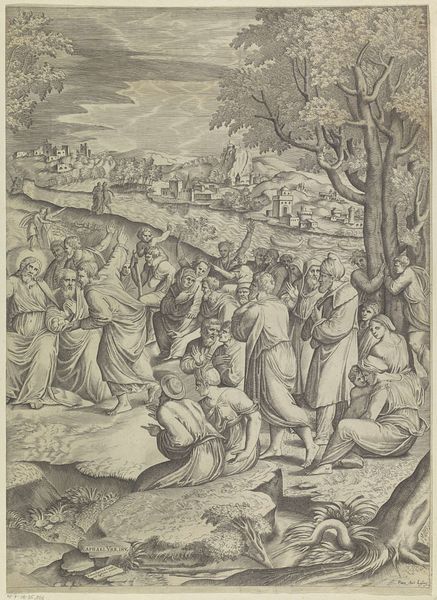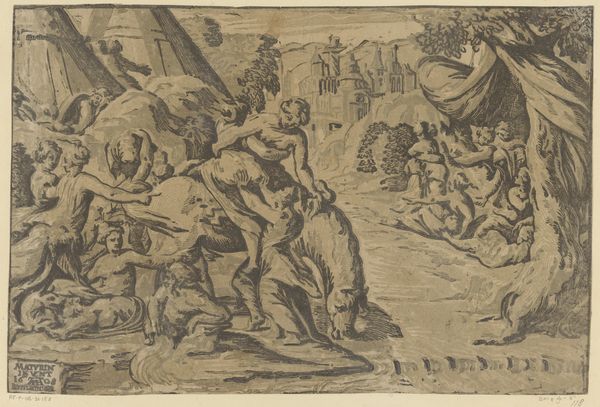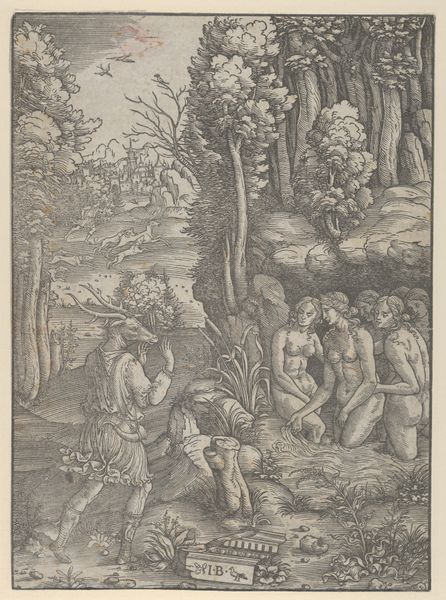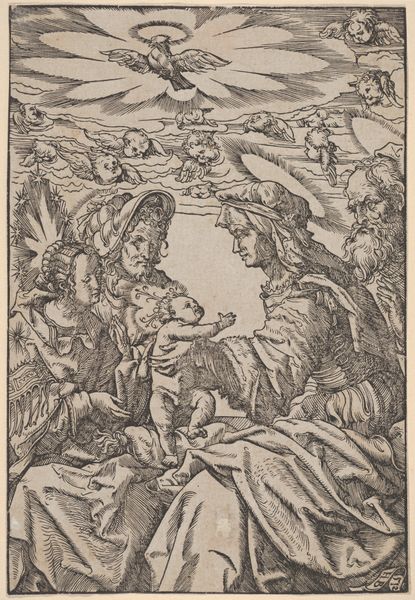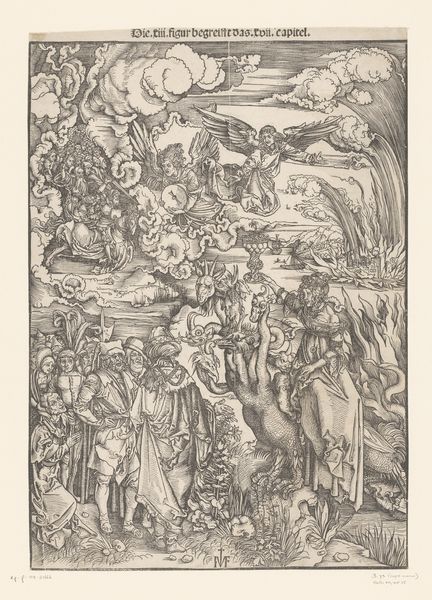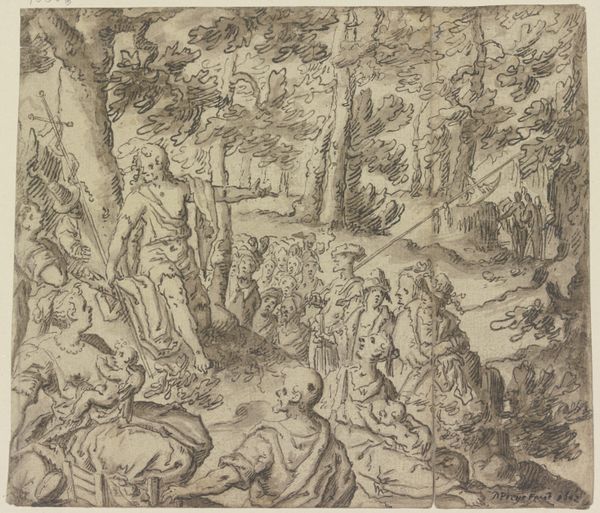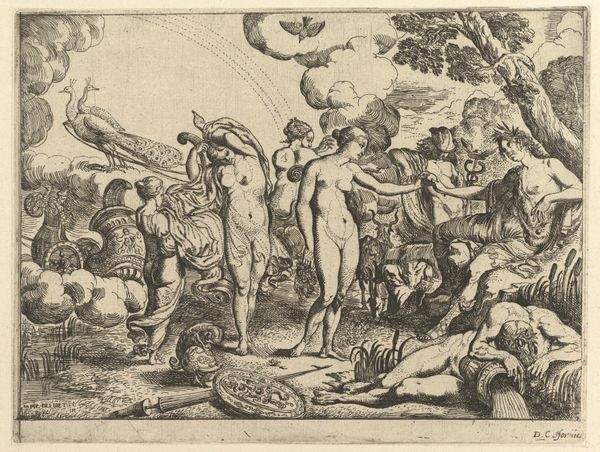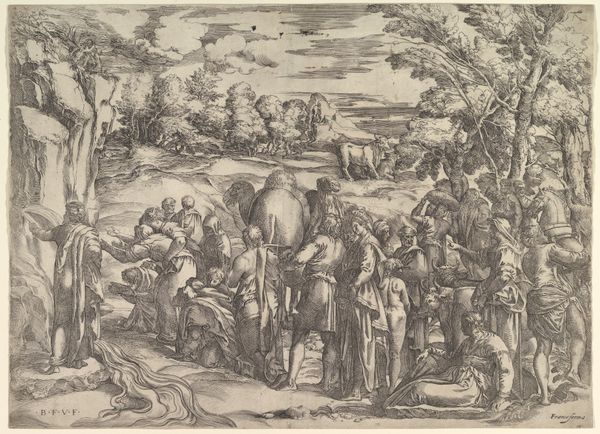
print, engraving
#
pen drawing
# print
#
pen illustration
#
pen sketch
#
pencil sketch
#
figuration
#
pen-ink sketch
#
history-painting
#
northern-renaissance
#
engraving
Dimensions: height 280 mm, width 210 mm
Copyright: Rijks Museum: Open Domain
Editor: So, this engraving, "Baptism of Christ" by Egidius Horbeck, made between 1582 and 1586, has a very formal and theatrical feel. The figures seem posed. What do you see in this piece? Curator: Well, beyond the immediate religious iconography, I see a powerful assertion of social order. The act of baptism itself becomes a ritual of inclusion and exclusion, defining who is within the 'flock.' Consider the historical context; this work emerges during a period of intense religious conflict and reformation. How might this depiction of baptism serve as a visual argument for a particular doctrine or social structure? Editor: I hadn't thought about it that way. It's easy to just see it as a religious scene, but you're right, there's a political dimension to it. Curator: Precisely. And look at the varied responses of the figures. Some are actively participating, others observe passively, some seem skeptical or even resistant. What does this range of reactions tell us about the artist's understanding of the complexities within the community he’s depicting? What about gender and class—how are these power dynamics visually represented here? Editor: I notice most figures represented appear to be men, suggesting a very male-dominated world, or at least a male-dominated interpretation of this story. Curator: Exactly. Consider, too, the text at the bottom. It frames the baptism as a covenant, a bond. But who is really benefiting from this "new covenant?" How does it impact women? How might different socioeconomic classes experience its imposition? Editor: It is interesting to see it from this point of view. I came looking for the story but hadn’t considered who tells the story. Curator: Thinking critically about those narratives reveals the ideologies embedded within the artwork. It allows us to see art not as a neutral reflection of history, but as an active participant in shaping it. Editor: That perspective really changes how I'll look at art from now on. Thanks for making that clearer.
Comments
No comments
Be the first to comment and join the conversation on the ultimate creative platform.

